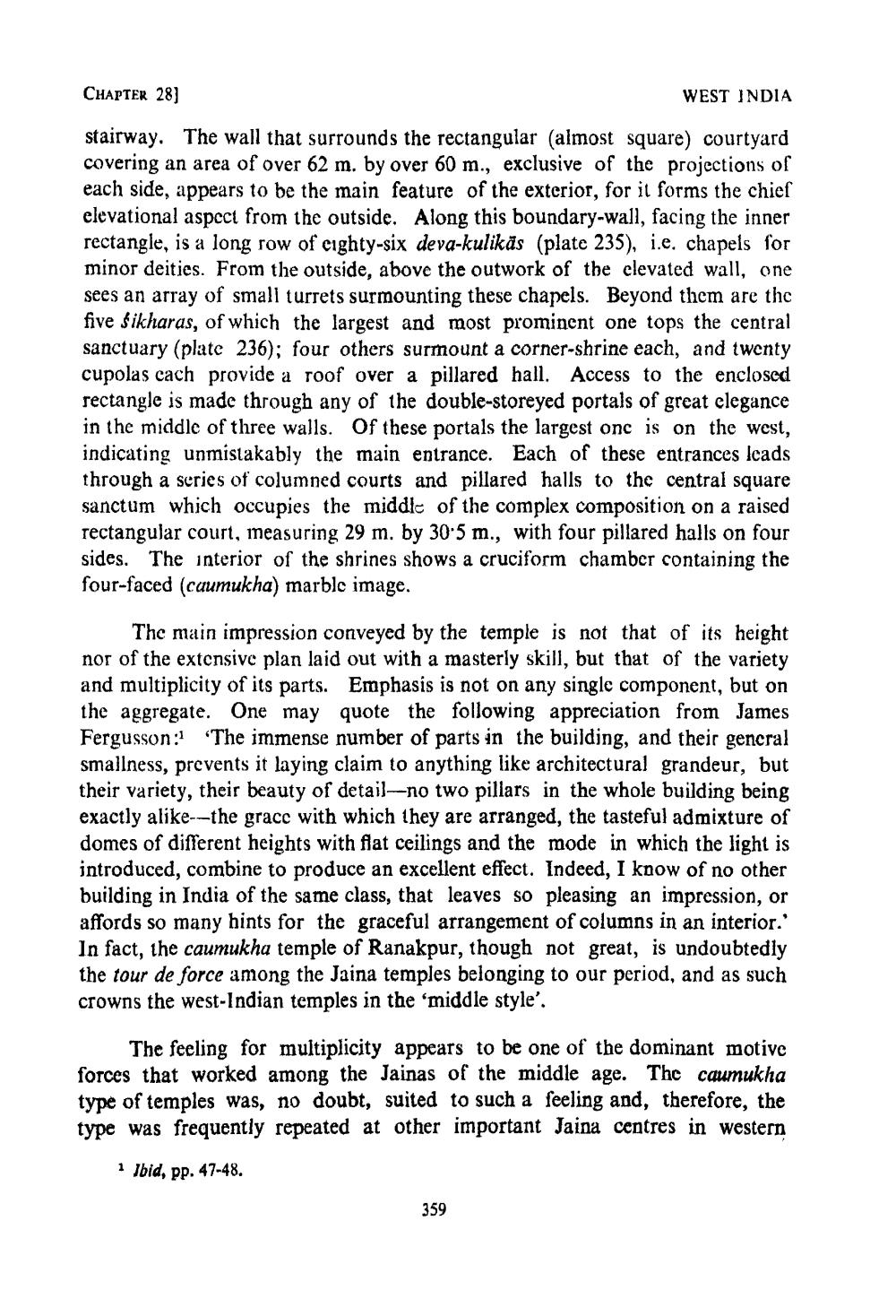________________
CHAPTER 28]
stairway. The wall that surrounds the rectangular (almost square) courtyard covering an area of over 62 m. by over 60 m., exclusive of the projections of each side, appears to be the main feature of the exterior, for it forms the chief elevational aspect from the outside. Along this boundary-wall, facing the inner rectangle, is a long row of eighty-six deva-kulikās (plate 235), i.e. chapels for minor deities. From the outside, above the outwork of the elevated wall, one sees an array of small turrets surmounting these chapels. Beyond them are the five Sikharas, of which the largest and most prominent one tops the central sanctuary (plate 236); four others surmount a corner-shrine each, and twenty cupolas cach provide a roof over a pillared hall. Access to the enclosed rectangle is made through any of the double-storeyed portals of great elegance in the middle of three walls. Of these portals the largest one is on the west, indicating unmistakably the main entrance. Each of these entrances leads through a series of columned courts and pillared halls to the central square sanctum which occupies the middle of the complex composition on a raised rectangular court, measuring 29 m. by 30.5 m., with four pillared halls on four sides. The interior of the shrines shows a cruciform chamber containing the four-faced (caumukha) marble image.
WEST INDIA
The main impression conveyed by the temple is not that of its height nor of the extensive plan laid out with a masterly skill, but that of the variety and multiplicity of its parts. Emphasis is not on any single component, but on the aggregate. One may quote the following appreciation from James Fergusson: The immense number of parts in the building, and their general smallness, prevents it laying claim to anything like architectural grandeur, but their variety, their beauty of detail-no two pillars in the whole building being exactly alike--the grace with which they are arranged, the tasteful admixture of domes of different heights with flat ceilings and the mode in which the light is introduced, combine to produce an excellent effect. Indeed, I know of no other building in India of the same class, that leaves so pleasing an impression, or affords so many hints for the graceful arrangement of columns in an interior.' In fact, the caumukha temple of Ranakpur, though not great, is undoubtedly the tour de force among the Jaina temples belonging to our period, and as such crowns the west-Indian temples in the 'middle style'.
The feeling for multiplicity appears to be one of the dominant motive forces that worked among the Jainas of the middle age. The caumukha type of temples was, no doubt, suited to such a feeling and, therefore, the type was frequently repeated at other important Jaina centres in western
1 Ibid, pp. 47-48.
359




